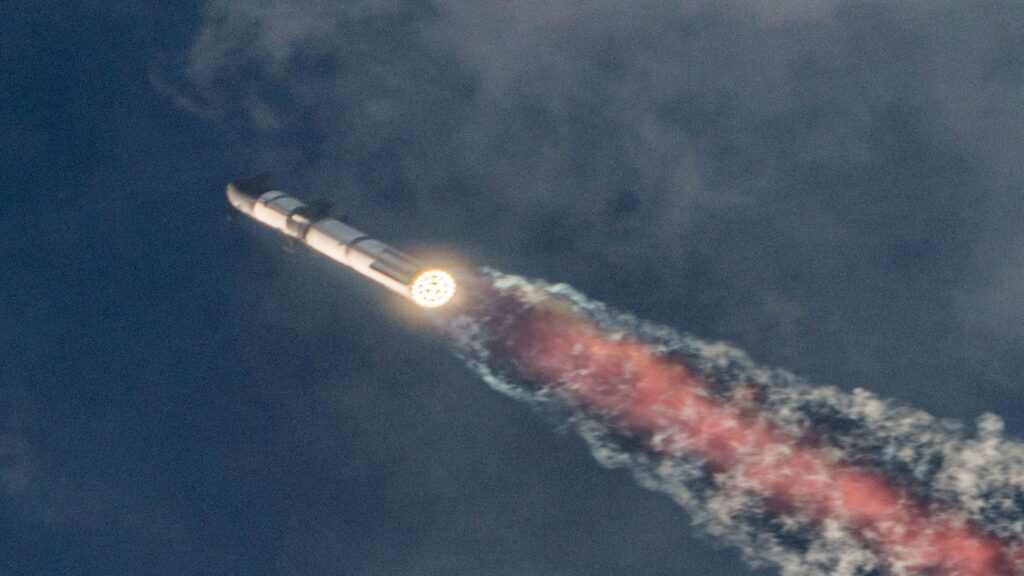SpaceX launched the third test flight of its Starship rocket on Thursday and reached space, as the company pushed development of the mammoth vehicle past new milestones.
Elon Musk’s company launched Starship at about 9:25 a.m. ET from its Starbase facility near Boca Chica, Texas.
The rocket flew further than previous tests, with the flight lasting about an hour before Starship broke up above the Indian Ocean. The company noted that the vehicle did not splash down in the water, which was the intended ending of the flight.
“We have lost Ship 28,” Dan Huot, communications manager at SpaceX, said on the company’s webcast.
The flight represents a significant step toward SpaceX completing prototype testing and beginning operational Starship launches.
SpaceX’s next-generation Starship spacecraft, atop its powerful Super Heavy rocket, begins its lift off on its third launch from the company’s Boca Chica launchpad on an uncrewed test flight, near Brownsville, Texas, U.S. March 14, 2024.
Joe Skipper | Reuters
Musk congratulated his company in a post shortly after the launch, announcing that “Starship reached orbital velocity!”
NASA chief Bill Nelson also congratulated SpaceX “on a successful test flight!”
“Starship has soared into the heavens. Together, we are making great strides through Artemis to return humanity to the Moon—then look onward to Mars,” Nelson, NASA’s administrator, wrote in a post on social media.
SpaceX has flown the full Starship rocket system on two tests in the past year, with launches in April and November. Both previous launches had progressive but explosive results: While each of the rockets flew for a few minutes, with the most recent reaching space, both vehicles were ultimately destroyed due to problems.
The Federal Aviation Administration on Wednesday cleared SpaceX for a third launch attempt.
Sign up here to receive weekly editions of CNBC’s Investing in Space newsletter.
The Starship system is designed to be fully reusable and aims to become a new…
Read the full article here





